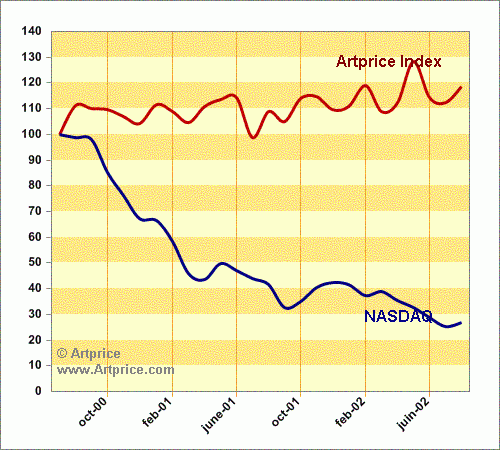Prices still rising at the start of a new season
[10/10/2002]
Despite a slowing economy in July and August, the threat of another war and uncertainty over the steady decline in the world stock markets, prices are still rising on the art market: on average, EUR100 invested in a work of art in July 2000 had appreciated to EUR118.7 as of September 1, 2002.
However, prices remain lower than last May. The price index gained 16 points between April and June. New York sales were particularly strong this year, so much so that buyers faced a dearth of lots for sale. The US bullishness fed through to most parts of the world, so sustaining the uptrend.
July marked the final rites of the first sales season. The price index continued to rise this year, even though this is traditionally a quiet period, when it is better to buy than to sell. On this very seasonal market, July is often the month of the year when prices are lowest. August sets the scene for the new season. And this year, prices gained 9% with respect to the end of August 2001. The traditional Australian August sales produced the desired effect: although 30% of the more than 1,000 lots went unsold, nearly a third of those sold beat their upper estimate.
Even in the short term, returns on investment can be considerable. The best-performing segments in the last few months have been paintings and prints, which have seen price rises of more than 8% since the start of the year. Photography enjoys spurts of growth, growth in drawings is easing and sculptures are trending downwards. Each market is inevitably influenced by its history and the nature of its sales; for categories still in an early stage of development, like photography, volatility is inevitable.
While share prices plummet, the safe-haven status of fine art has been confirmed. Supply seems to have become particularly inelastic to the growing demand. In such circumstances, price should still increase
Fine Art prices versus stock market indexesMonthly Artprice index of paintings and NASDAQ




 0
0
